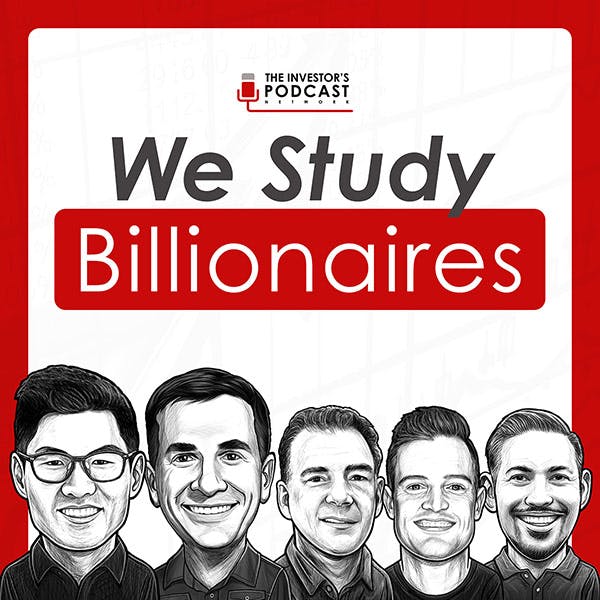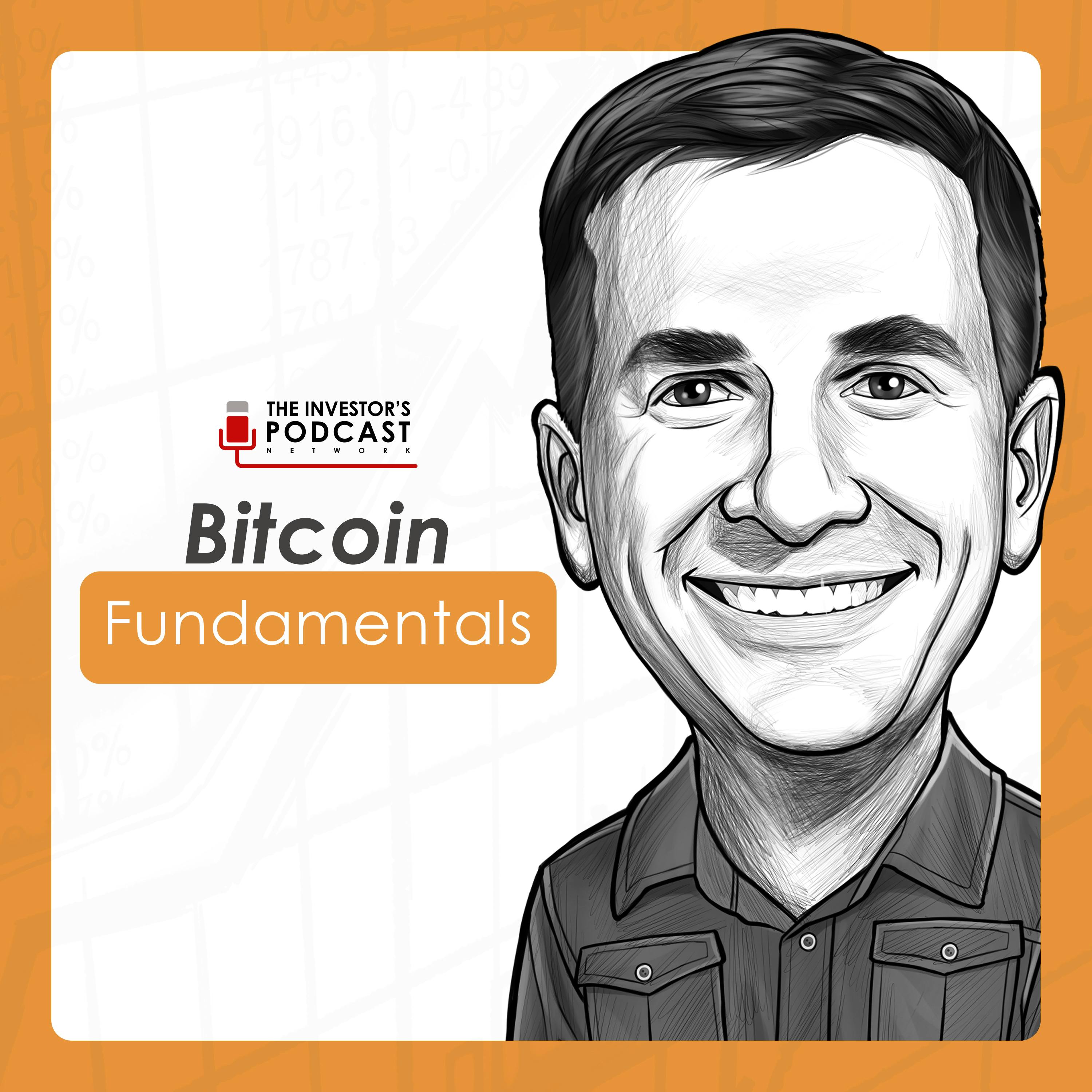
September 1, 2024 • 2hr 15min
RWH049: Crushing The Market Over 50 Years w/ Jay Bowen
We Study Billionaires - The Investor’s Podcast Network

Key Takeaways
- Jay Bowen and his father generated exceptional returns for the Tampa Firefighters' & Police Officers' Pension Fund over 50 years, growing it from $12 million to over $3 billion
- Their stock portfolio achieved an annualized return of 14.4% over 50 years, significantly outperforming market indexes
- Key factors in their success include:
- Taking a very long-term (20+ year) investment approach
- Keeping fees extremely low (0.25% flat fee)
- Focusing on high-quality businesses that can compound for many years
- Using a top-down thematic approach to identify major trends
- Being opportunistic during market downturns
- Maintaining a relatively concentrated portfolio of 40-50 stocks
- They avoided complex strategies, alternative investments, and frequent trading in favor of a simple, high-quality stock-focused approach
- Jay believes most pension funds would be better off not owning bonds at all and taking a very long-term all-stock approach
- Physical fitness and reading widely in areas unrelated to investing have been important for Jay's mental performance and endurance as an investor
Introduction
In this episode, William Green interviews Harold J. ("Jay") Bowen III, President & CIO of Bowen, Hanes & Company. Jay and his late father have generated exceptional returns for their largest client, the Tampa Firefighters' & Police Officers' Pension Fund, over the past 50 years. The fund's stock portfolio has achieved an annualized return of 14.4% over that period, significantly outperforming market indexes. Jay explains their investment approach and philosophy that led to this long-term success.
Topics Discussed
Background on the Tampa Pension Fund (8:37)
Jay provides background on how his father initially became involved with the Tampa pension fund in the late 1960s and formally took over management in 1974. At that time, the fund had about $12 million in assets. Through their management, it has grown to $3.1 billion today, even after paying out $1.8 billion in benefits over that period.
"From 12.1 million to 3.1 billion over the period and one with 1.8 billion taken out. So when you net it all out, it's even more dramatic than it appears in terms of the 3.1 because, like I say, 1.8 billion dollars has been taken out of the fund over the 50 year period." - Jay Bowen
- The fund provides retirement benefits for Tampa firefighters and police officers
- It has significantly outperformed other pension funds and market indexes over multiple decades
- Their stock portfolio returned 81,031% cumulatively over ~50 years (14.4% annualized)
Key Factors in Their Long-Term Success (29:09)
Jay outlines several key factors that contributed to their exceptional long-term performance:
- Very low fees - They charge a flat 0.25% fee, much lower than typical pension fund fees
- Long-term focus - They take a 20+ year view and avoid short-term trading
- High-quality approach - Focus on owning great businesses that can compound for many years
- Concentrated portfolio - Own 40-50 stocks, allowing best ideas to drive returns
- Opportunistic during downturns - Use market crashes to buy great companies at discounted prices
"If you can focus on the long term, which these plans should be focused on the long term, there is not a, there just isn't a case to own bonds." - Jay Bowen
Top-Down Thematic Investment Approach (38:54)
Jay explains their top-down thematic approach to investing:
- Start by analyzing broad macroeconomic, political, and technological trends
- Identify sectors and industries likely to benefit from those trends
- Within those areas, find high-quality companies using traditional valuation metrics
- Current major theme is the "Fourth Industrial Revolution" - AI, automation, etc.
"We're really, from a top down standpoint after the companies, again, that had the vision, strategy and tactics to exploit it, to exploit these new technologies, that hopefully it's going to help these companies from a profitability standpoint." - Jay Bowen
Examples of Successful Long-Term Investments (43:03)
Jay provides examples of successful long-term investments they've made:
- Coca-Cola - Bought in mid-1980s for $1.50/share before Buffett
- General Electric under Jack Welch - Stock returned ~4000% over 20 years
- Colgate under CEO Reuben Mark - Benefited from global expansion
- Apple - Bought in 2011 after selling Coca-Cola position
Views on Bonds in Pension Portfolios (51:09)
Jay argues that pension funds with very long time horizons should not own bonds at all:
- Stocks have dramatically outperformed bonds over 20+ year periods historically
- Bonds reduce long-term returns without providing meaningful benefits for truly long-term investors
- Many pension funds own too many bonds due to flawed modern portfolio theory approaches
"Municipal funds should not own bonds. They should not own bonds. It's just the overwhelming. The data is so overwhelming." - Jay Bowen
Positioning for the "Fourth Industrial Revolution" (1:05:31)
Jay discusses how they are positioning the portfolio to benefit from the "Fourth Industrial Revolution":
- Major theme encompassing AI, automation, 3D printing, nanotechnology, etc.
- Impacts multiple sectors including technology, healthcare, industrials
- Key holdings include Nvidia, Apple, Microsoft, Teledyne Technologies
- Also own smaller "future blue chip" companies they believe will become much larger
Approach to Valuation and Expensive Stocks (1:10:27)
Jay explains their approach to valuation, especially for expensive-looking stocks:
- Willing to pay higher multiples for truly exceptional businesses
- Look at PEG ratio (P/E relative to growth rate) to assess value
- Take profits and trim positions as they become too large (>5% of portfolio)
- Struggle with extremely high valuations like Costco, but recognize quality
Investing in Smaller "Future Blue Chip" Companies (1:14:29)
Jay discusses their strategy of investing in smaller companies they view as potential future blue chips:
- Look for companies with $1-5 billion in revenue that could become much larger
- Focus on management quality, vision, and global growth potential
- Examples include Tetra Tech (engineering/consulting) and Badger Meter (flow control)
- These often become acquisition targets for larger companies
Views on Federal Reserve and Monetary Policy (1:18:06)
Jay shares his concerns about Federal Reserve policy:
- Critical of discretionary monetary policy approach
- Believes Fed has made many major policy errors historically
- Advocates for more rules-based monetary policy framework
- Worried Fed may keep policy too tight for too long currently
Investing During Market Turmoil (1:22:16)
Jay explains their approach to investing during major market downturns:
- Expect a major crisis every 10-15 years - mentally prepare for it
- Use downturns as opportunities to buy great companies at discounted prices
- Actions during crises often more important than positioning beforehand
- Avoid making dramatic asset allocation shifts unlike many pension funds
"It's what you do during those dramatic and traumatic periods, what you're buying, the positions you're building and then you just. And you're there and with confidence that over the next ten, particularly 20 years, it's going to really pay off." - Jay Bowen
Impact of Physical Fitness on Investing (1:37:58)
Jay discusses how his focus on physical fitness has impacted his investing:
- Does extensive endurance training - running, cycling, swimming
- Completed Escape from Alcatraz triathlon 14 times
- Exercise provides major cognitive and focus benefits
- Structures workday around physical activity to optimize mental performance
Daily Routine and Habits (1:53:58)
Jay shares insights on how he structures his days and habits:
- Organizes schedule around physical activity for mental benefits
- Works remotely in very quiet environment to maximize focus
- Reads literature and history on weekends, avoiding investment materials
- Believes diverse intellectual pursuits make him a better investor
Conclusion
Jay Bowen and his father's 50-year track record with the Tampa pension fund demonstrates the power of a disciplined, long-term, high-quality investment approach. By focusing on great businesses, keeping costs low, thinking thematically, and maintaining a very long time horizon, they significantly outperformed markets and peers over decades. Their unconventional, concentrated approach avoided many of the pitfalls common to pension funds. Jay's emphasis on physical and mental fitness also contributed to his ability to sustain high performance as an investor over many years. While their specific approach may be difficult to fully replicate, there are valuable lessons for both individual and institutional investors in their philosophy and methods.









